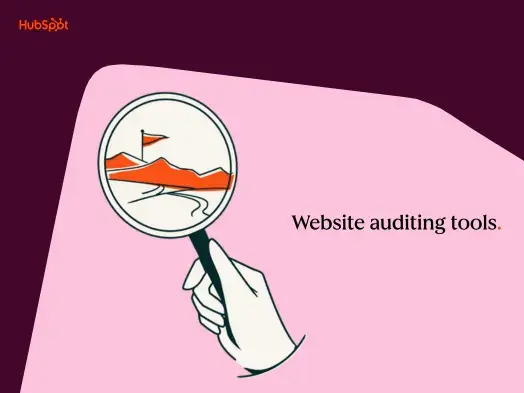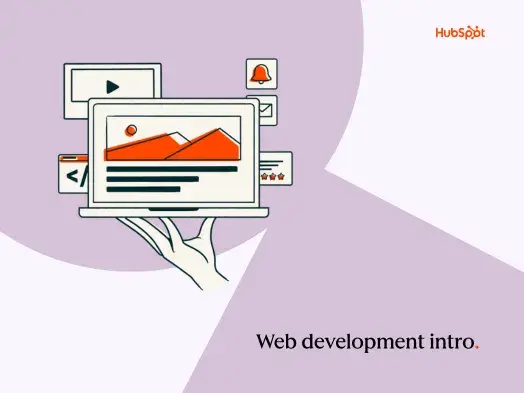To ensure you can make the right choice for your business needs, we'll cover the following topics:
- what a web application is
- what a mobile app is
- what the difference is between the two
- what a progressive web app is
- how to build a web app
- examples of web apps
What is a web application?
A web application is a type of app that can be accessed through a web browser. When accessed in a browser on a mobile device, web apps look and behave like mobile apps — but they aren’t the same.
Let’s look at the advantages and disadvantages of a web app, then define what a mobile app is.
Advantages of a Web App
- Platform-agnostic: Web apps are not built for a specific platform. They can be built for all platforms as long as they can run in a web browser.
- Low upfront costs: Since they aren’t specific to a platform, web apps don’t require a lot of time or developers to build. That means web apps will be less expensive upfront than other types of apps.
- Easy to maintain: Because web apps are platform-agnostic, they don’t need to be written in a specific coding language. Instead, they use coding languages that are common across multiple platforms — typically a combination of server-side script, like PHP, and client-side script, like HTML and Javascript. This makes them relatively easy to not only build but maintain.
- No app marketplace: Since web apps don’t adhere to standard operating system protocols, they don’t require approval from an app store. That means they can be released in the format and at the time the developers choose.
- Automatic updates: Since web apps aren’t downloaded from an app store, users don’t have to go to the app store to manage their updates. Users always see the most up-to-date version when they open a web app.
Disadvantages of a Web App
- Need internet: Since web apps are accessed via browsers, users need to be connected to the internet to use them. That means they can’t work offline, which can frustrate users if they’re having trouble connecting to the internet.
- Poor discoverability: Because web apps are not listed in an app store, they do not get marketed or promoted in that marketplace. That can make it more difficult to gain visibility and user adoption for a web app.
- Less functionality: Web apps have a much smaller scope when it comes to leveraging device features and hardware. Because web apps are not designed for a specific operating system, they don’t have access to that system’s features. That means less functionality than other types of apps.
- Poor UX: Just as web apps do not have to adhere to an operating system’s protocols, they don’t need to adhere to its UI standards either. This makes it more difficult to provide a seamless experience for users.
What is a mobile app?
A mobile app is the most common type of app. Also known as a native app, a mobile app is built for specific platforms, which dictates what languages they’re written in. Native iOS apps, for example, are written in Swift and Objective-C and native Android apps are written in Java or Kotlin.
Let’s look at the advantages and disadvantages of a mobile app, then compare a web and mobile app.
Advantages of a Mobile App
- High-performing: Mobile apps are the best-performing type of app. Since they must adhere to standard operating system protocols to be approved by their respective operating system, mobile apps excel in quality, security, and device compatibility.
- Superior UX: Since mobile apps are designed for a specific operating system, they have access to all the system’s features. That means they can provide more features that meet users’ needs. Users are also likely to have a more seamless experience on mobile apps since they have to adhere to the operating system’s UI standards.
- Support from app marketplace: Mobile apps are supported and distributed by app stores. This can make them easier to discover and boost their downloads.
Disadvantages of a Mobile App
- High upfront costs: Since mobile apps are specific to a platform and must adhere to the operating system’s protocols and guidelines, mobile apps require a lot of time and experienced developers to build. That means mobile apps will be more expensive upfront than other types of apps.
- Need approval from app marketplace: Since mobile apps adhere to standard operating system protocols, they require approval from an app store. That means developers don’t get to decide the format or time that the app is released.
- Manual updates: Since mobile apps are downloaded from an app store, users have to go to the app store to manage their updates. If they don’t update the mobile app when available, they’ll see an out-of-date version when they open the app.
- Difficult to maintain: Because mobile apps are specific to a platform and must adhere to language, protocol, and UI requirements, they can be difficult to maintain and update.
Some websites will have a native mobile app and web app. Let’s compare the two app types of Goodreads below, starting with the native app, so we can more clearly understand the differences.

Using the Goodreads’s native mobile app, the titles on your “Want to Read” shelf will appear as they do in the screenshot above. Notice there are sort and filter options to view these titles, and preview buttons for individual titles. The navigation bar also appears at the bottom of the screen so you can switch to the homepage or discover page, or search a title to browse.
Now let’s take a look at the web app.

The color scheme, layout, and overall look of the web app is similar to that of the mobile app — but there are some noticeable differences in design and functionality.
First, there’s no filter or sort options to view the titles, or preview buttons to preview individual titles. Second, the navigation bar appears at the top of the screen, with different options than the mobile app. There’s also an ad below the navbar and a banner inviting users to open the Goodreads mobile app. This all takes up so much space that only two book titles fit on the screen, while almost four titles fit on the screen of the mobile app.
While both apps accomplish the same goal — enabling users to view the book titles on their “Want to Read” Shelf — the native mobile app provides a better experience than the web app. However, it’s smart of Goodreads to provide both so that users who haven’t downloaded the mobile app can still view the site on their phones.
What if you don’t have the time or money to build both app types? In that case, you might be interested in a progressive web app. Let’s look at this type of app below.
Progressive Web App (PWA)
Since web apps lack important functionality of native apps, like working offline or sending push notifications, progressive web apps (PWAs) were created to combine the best of both worlds. A hybrid of web pages and native apps, PWAs offer advanced functionality lacking in web apps, like sending push notifications, working without internet access, and supporting touch gestures and commands. But PWAs are similar to web apps in that they don’t require you to download or install them.
The disadvantage of PWAs? They’re only compatible with Google Chrome. That means you’ll be excluding iOS users. While this will work for some businesses, it won’t work for all. Make sure that creating a PWA aligns with your business strategy before starting development.
How to Build a Web App
Interested in building your own web app? If so, the general process looks like this:
- Pick your idea.
- Do your market research to make sure it’ll fill a gap.
- Define your app's functionality.
- Map out user journeys.
- Create a wireframe.
At this point, your web app is ready for the development stage. Unlike with native mobile apps, there’s no software development kit (SDK) for web app developers. However, there is a standard for web apps. Most are built with a combination of server-side script, like PHP, and client-side script, like HTML and Javascript.
Because most developers are familiar with these coding languages and web apps have limited features, web apps are relatively easy and quick to build — especially when compared to native apps.
Web App Examples
Web apps take on a variety of forms. They can be online forms, shopping carts, word processors, spreadsheets, email, and more. Let’s take a look at some of the most popular web apps today.
Gmail
Gmail is one of the best examples of a web application. It does so much more than simply display emails. It enables users to reply to emails, compose new ones, archive old ones, and chat with other users. They can also search their inbox, report spam, star messages, and more. The major difference between the Gmail web app and native mobile app for Android and iOS devices is that you can’t receive new mail or push notifications.

When Twitter released a progressive web app in 2017, it became one of the highest-profile examples of this new technology. For users who don’t have much storage on their phone, Twitter’s PWA is a great lightweight alternative to its mobile app. Using the PWA, you can compose, like, retweet, and reply to tweets. As of May 2020, you can also use the web app to schedule tweets or save them as drafts. However, the web app lacks some functionality that the native app offers. It does not currently support the Fleets feature, for example.

Uber
Uber rebuilt its web application from the ground up in 2017 to ensure that users could request a ride no matter where they are, what device they have, or what their network speed is. Compatible with all modern browsers and less than 50KB, m.uber is able to load quickly on any device and even on 2G networks.

Starbucks
Also in 2017, Starbucks built a PWA ordering system from the ground up for users who may not have consistent access to the internet, or may lose it periodically throughout the day. With smooth animations, a small file size, and the implementation of caching, this PWA looks and feels like the native app — but it’s faster, ultra responsive, and high performing. Customers can use the PWA to look at the menu and nutrition information, view pricing that’s specific to their location, and customize and place their orders.

Websites on the Go
According to Statista, mobile has accounted for approximately half of web traffic worldwide since 2017. Web and native mobile apps are solutions that more and more businesses are embracing to ensure that all users have an excellent experience no matter what device they’re on.
Website Development





![How to make a website with user accounts and profiles [with WordPress, Wix, and more]](https://53.fs1.hubspotusercontent-na1.net/hubfs/53/%5BUse%20(3).webp)
![How to build a Google Site that looks good and drives business [templates & examples]](https://53.fs1.hubspotusercontent-na1.net/hubfs/53/Website%20Redesign%20Terms.png)





